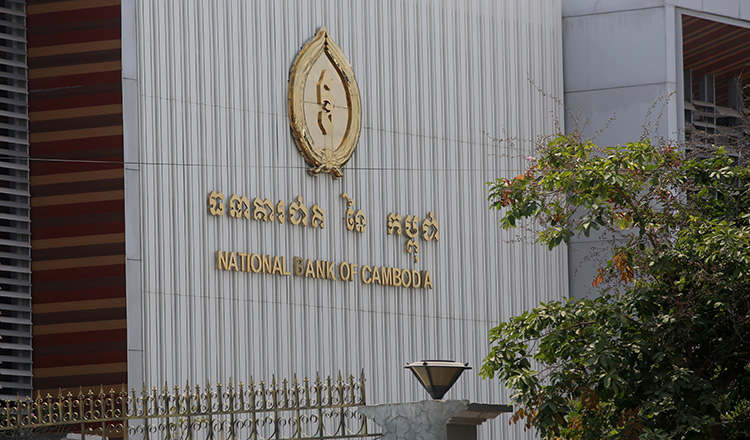By Pat Beck
Raison d’être – Public Finance
Throughout history, central bank mandates have evolved. Generally, these adaptations involve an increase in the scope of the aegis of the institution evinced through the refinement and addition of tools central banks possess. However, the arguments for the creation of central banks began with a need to help facilitate the funding and marketing of sovereign debt. Public debt management remains a central tenet of central banks today. In this early period, central banks were also tasked with issuing currency. Yet, over time, the banks began to be issued a wider range of responsibilities. (Redish, 2012).
Financial Stability
In 1793, a series of bank runs in England commenced as liquidity was tight during England’s war with France. It was then that Sir Francis Baring began calls for the central bank to act as a lender of last resort by assuming liabilities of retail banks in order to promote financial stability in tumultuous times. The concept that a central bank is the lender of last resort has persisted to this day. (Jones, 2023) In 1873, Walter Bagehot, the famed journalist and editor of The Economist, called for central banks to impose high rates known as penalty or discount rates – against quality assets commercial banks held should they avail themselves of the assistance of the lender of last resort. (Le Maux, 2011) This was an attempt to incentivize banks to explore alternative funding options in private markets before appealing to the central bank for assistance by charging a rate that was higher than the prevailing private market rates between banks.
Bagehot’s ideas would act to limit moral hazard as penalty-free lending rates would cause banks to be inclined to take excessive risks knowing that a central bank would bail them out from a position of insolvency. due to liquidity mismatches and market panics when private market actors would be unwilling to do so.
And then there was gold – Stable currencies
Another series of banking crises beginning in the 1870s created a demand for central banks to maintain the stability of national currencies which beget a long period known as the gold standard. Central bankers were tasked with maintaining the convertibility of their nation’s paper- based money to a fixed amount of gold. Furthermore, this required central banks to actively attempt to manage their currency’s exchange rate with other nations.
This system, however, produced contractionary policies and fueled deflation as central bankers were forced to contract the money supply to keep the value of their currency on par with a limited supply of gold. The system resulted in instability again as inherent flaws that limited both liquidity and thereby economic growth proved ineffective when large spending and deficits took place in the lead up to World War I.
Further, politicized central banks began to limit or halt the conversion of foreign. money within their country and suspended the export of bullion to neighboring states that attempted to exchange their holdings of foreign currency. Central banks also engaged in rounds of currency devaluations in attempts to boost the attractiveness of their exports. Many nations experienced wild exchange rate fluctuations and inflation and the discount rate was revisited as a tool to try to stall rampant inflationary pressures of the time. Towards the end of World War II it became clear that currency stability was not enough to produce systemic stability.
Macro stability and policy:
International commerce became too risky as large exchange rate fluctuations, price changes, and the inconvertibility of foreign currencies made predicting trade gains or losses based on future dates uncertain and undercut one of money’s main roles which is to act as a medium of exchange. Additionally, pressures to devalue one’s own currency damaged the role of money as a store of value and made holding foreign reserves risky. To help restore macro stability of the monetary system and confidence in the banking system, the Bretton Woods Conference was held in 1944 where the US dollar was fixed to the price of gold at $35/ounce and member countries’ central banks agreed to hold the value of their home currency to a pegged rate with the dollar. It was at this time that maintaining a fixed exchange rate became paramount for central bankers and inflation was kept in check by tying the US dollar to a fixed amount of gold. Eventually, this became an unsustainable position with the number of US dollars exceeded first, the value of the total holdings of gold by the US and then eventually the value of gold on Earth.
Therefore, in 1971 President Nixon suspended the convertibility of US dollars into gold at $35/ounce and signified the end of both the Gold Standard and Bretton Woods Era.
Following the demise of Bretton Woods, the world has experienced a series of banking and financial crises with some of the more notable being the Mexican Peso/Latin American Debt crisis, the US Savings and Loan crisis, the collapse of the Japanese asset bubble, the Asian Financial Crisis, the Russian, Turkish, and Argentine crises, the Global Financial Crisis, and the European Sovereign Debt Crisis. (Reinhart & Rogoff, 2009) This period of time witnessed new effects of a more globalized and interconnected banking system. Culminating with the Global Financial Crises, central banks began to coordinate policy across borders and expand their toolbox further. (Goodheart, 2011).
Things get unconventional:
To respond to these challenges, central banks began acting in new ways known as unconventional monetary policy. The Bank of Japan began experimenting with quantitative easing and direct asset purchases, the European Central Bank followed suit and extended the duration of bond issuances, collectivized sovereign debt financing, and expanded supervisory powers. The US FED established currency swaps, Repo agreements, directly bailed out financial institutions, provided foreign guidance, purchased assets and so on. (Bordo, 2022).
Most recently, central banks are contending with large debt burdens and rising interest rates and have responded by transforming into the de facto provider of liquidity of first resort. This can be seen most readily by US FED actions following the Silicon Valley Bank and First Republic panics and by the People’s Bank of China. signaling that it will engage in open market operations for Treasury Bonds and for pushing for more swap lines. Further still, the European Central Bank has made this shift explicit by adopting a new “Operational Framework” in March of 2024 that explicitly focuses on providing liquidity. In other words, although monetary policy is still the role of central banks, providing market liquidity has presently taken center stage for central banks. This appears to be the most important role for central banks now due to high levels of volatility in global markets, recent and impending bank failures, rising geopolitical uncertainty, financial sanctions, frozen foreign reserves, US-China decoupling, and rising holdings of gold reserves.
The National Bank of Cambodia’s mission “to determine and direct monetary policy aimed at maintaining price stability to foster economic development” is broad enough in scope to be able to navigate these times. To ensure adequate resources to respond to the liquidity needs of the real economy, the NBC should direct banks and MFIs to create a self-financed bank deposit insurance scheme to avert market panics and to facilitate larger interbank swap lines at pre-negotiated overnight rates. This will create a more robust market with less need for intervention which reduces the implicit liabilities of the NBC. The latter point should prove to be incredibly important as quantitative tightening and rising interest rates limit heavily-indebted central banks’ abilities to pursue unconventional policies.
Meanwhile, the supervisory powers of the NBC must be maintained to stave off any potential solvency issues before they arise. Forestalling de-dollarization will keep a larger pool of liquidity available to local markets during these tumultuous times and reduce the need for intervention. It is certain that the mandate of central banks will continue to evolve. Presently, the NBC should continue to be forward looking by remaining abreast on emerging trends to include green development objectives into central bank mandates, and to include any such duties within the current mandate set by the Royal government of Cambodia.
Pat Beck is Assistant Professor at CamEd Business School. Experienced University Lecturer and Global Business Development Manager with a demonstrated history of working in cross-disciplinary fields. This article was published in the CamEd Business Review June H1 2024 edition.





